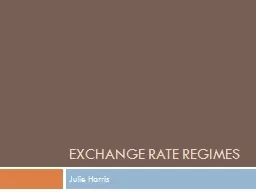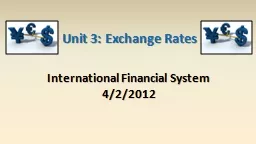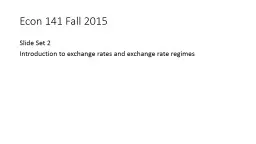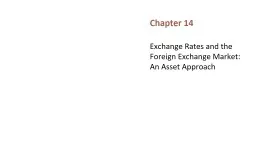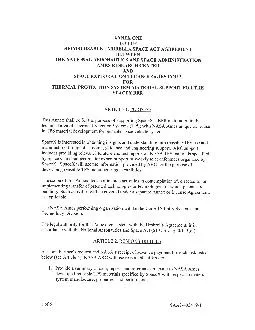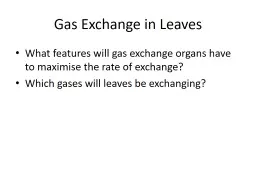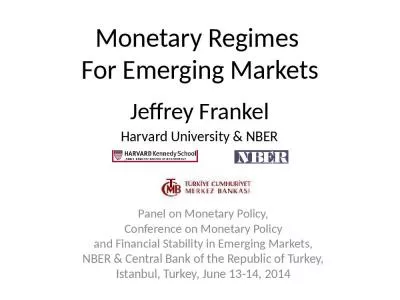PPT-Exchange Rate Regimes Julie Harris
Author : pasty-toler | Published Date : 2018-11-04
Fixed vs Floating The exchange rate fluctuates in a narrow range or not at all against a base currency over a sustained period of time Government action is needed
Presentation Embed Code
Download Presentation
Download Presentation The PPT/PDF document "Exchange Rate Regimes Julie Harris" is the property of its rightful owner. Permission is granted to download and print the materials on this website for personal, non-commercial use only, and to display it on your personal computer provided you do not modify the materials and that you retain all copyright notices contained in the materials. By downloading content from our website, you accept the terms of this agreement.
Exchange Rate Regimes Julie Harris: Transcript
Download Rules Of Document
"Exchange Rate Regimes Julie Harris"The content belongs to its owner. You may download and print it for personal use, without modification, and keep all copyright notices. By downloading, you agree to these terms.
Related Documents

